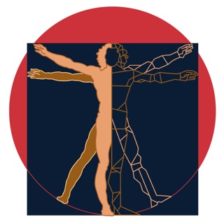In a nutshell the main thesis of the Piagetian perspective on Paleolithic evolution of cognition is that ontogeny recapitulates phylogeny. This simply means there is a parallelism between the development of a species’ thought processes and its evolution. Piaget himself called this idea as “a parallelism between the progress made in the logical rational organization of knowledge and the corresponding formative psychological processes.”
Jean Piaget is a developmental psychologist who was known for his epistemological studies with children. He was greatly renowned as the pioneer of the “constructivist theory of knowing”.
According to Piaget, intelligence develops in a series of progressive stages. One stage must be accomplished before the next can occur. He said that this phenomenon could be readily observed in the developmental stages that children go through.
Applying the Piagetian perspective to the evolution of hominid’s by interpreting the archeological record in this perspective is just appropriate as Piaget’s theory is not just applicable to the development of the cognitive processes of children but that it is intended as a general theory of development. In explaining this intention Piaget himself said “ . . . Unfortunately we are not very well informed about the psychology of Neanderthal man since this field of biogenesis is not available to us, we shall do what biologist do and turn to ontogenesis of these notions. Nothing could be more accessible to study than the ontogenesis of these notions. There are children all around us. It is children that we have the best chance of studying the development of logical knowledge, mathematical knowledge, psychology and so forth.”
Without Piaget’s theory on the development of the cognitive knowledge, paleoanthropologist and pre-historic archeologist would have no theoretical frame work as to how to go about interpreting stone tools and other cultural material of pre-historic man. Hypothesis drawn from the archeological evidences would only be general observations, comparative analysis of artifacts, descriptions of the fossil data and nothing more. Not that these are unimportant but so far in my opinion applying Piaget’s theory in the interpretation of pre-historic archeological record is the most logical theoretical framework backed by sensible inferential evidence.
Without a solid logical theoretical framework, only general observations will be drawn in the interpretation of pre-historic cultural material culled from the archeological record. Consider the article of John Gowlett written in 1984 entitled “Mental abilities of Early Man: A look at Some hard evidence.” True enough as the title would suggest, the article is just “a look” at the hard evidence and nothing more. No in-depth discussion is made as on how to interpret the archeological record. A mere general discussion on the human mental evolution and a presentation of the evidences is just presented. A general conclusion on the “complexity” of the stone tools and the suggestion that the Oldowan could have served as a basis for the later emergence of the Acheulean is made. Gowlett makes his conclusion by detailing the operational chains of both the Oldowan and Acheulan industries, making comparative observations on both industries and considering other pre-historic human actions such as the use of Fire and animal butchery.
This is not to minimize Gowlett’s effort in trying to obtain a conclusion from the operational processes among others. However I must say that the conclusion drawn from observing the operations processes are merely descriptive and in fact can be summarized in one word – “Complex.” Gowlett went further to say that this “complexity” serves as the foundation of the origins of Mathematics and Art or in short the emergence of modern thinking.
With due respect to Gowlett’s work, I believed he has a point in emphasizing the complexity of the stone tools and that he did us a great favor in discussing the evidences that backs this complexity. But still, a lot of questions remain. How “complex” is “complex”?
Yes it is complex and yes there are difference between the Oldowan and the Acheulean and yes the Oldowan could serve as a basis for the later emergence of the Acheulean, but the question is why is the Oldowan stone tools shaped as such and why are the Acheulean stone tools shaped as such? What are the possible mental processes that possibly went through the hominid’s minds that shaped such tools? Is it possible that these mental processes could serve as the basis of the emergence of modern thinking? How does this complexity serve as the foundation of modern thinking? If the foundations of modern thinking started there, what are these? Is it possible to understand these mental processes? Can we obtain knowledge or can even understand these mental processes? Frankly, these are questions that Gowlett failed to answer.
More than describing geometric shapes of the stone tools and labeling them as “complex” The application of Piaget’s theory by Wynn goes beyond mere descriptions of the geometry of the artifact and its processes and provides possible answers to the above questions. In his book originally published in 1989, “The Evolution of Spatial Competence,” Thomas Wynn painstakingly describes the possible mental processes that went through the hominid’s mind and the possible mental templates that served as their basis in manufacturing pre-historic stone tools and why these could be the foundational thought processes that serves as the basis for modern thinking. Without the application of Piaget’s theory to the interpretation of the pre- archeological record after decades of pre-historic archeology research we would not only be merely scratching the surface, we will still be left scratching our heads.
 Hi ! my name is Zigfred Diaz. Thanks for visiting my personal blog ! Never miss a post from this blog. Subscribe to my full feeds for free. Click here to subscribe to zdiaz.com by Email
Hi ! my name is Zigfred Diaz. Thanks for visiting my personal blog ! Never miss a post from this blog. Subscribe to my full feeds for free. Click here to subscribe to zdiaz.com by Email
You may also want to visit my other blogs. Click here to learn more about great travel ideas.

Leave a Reply